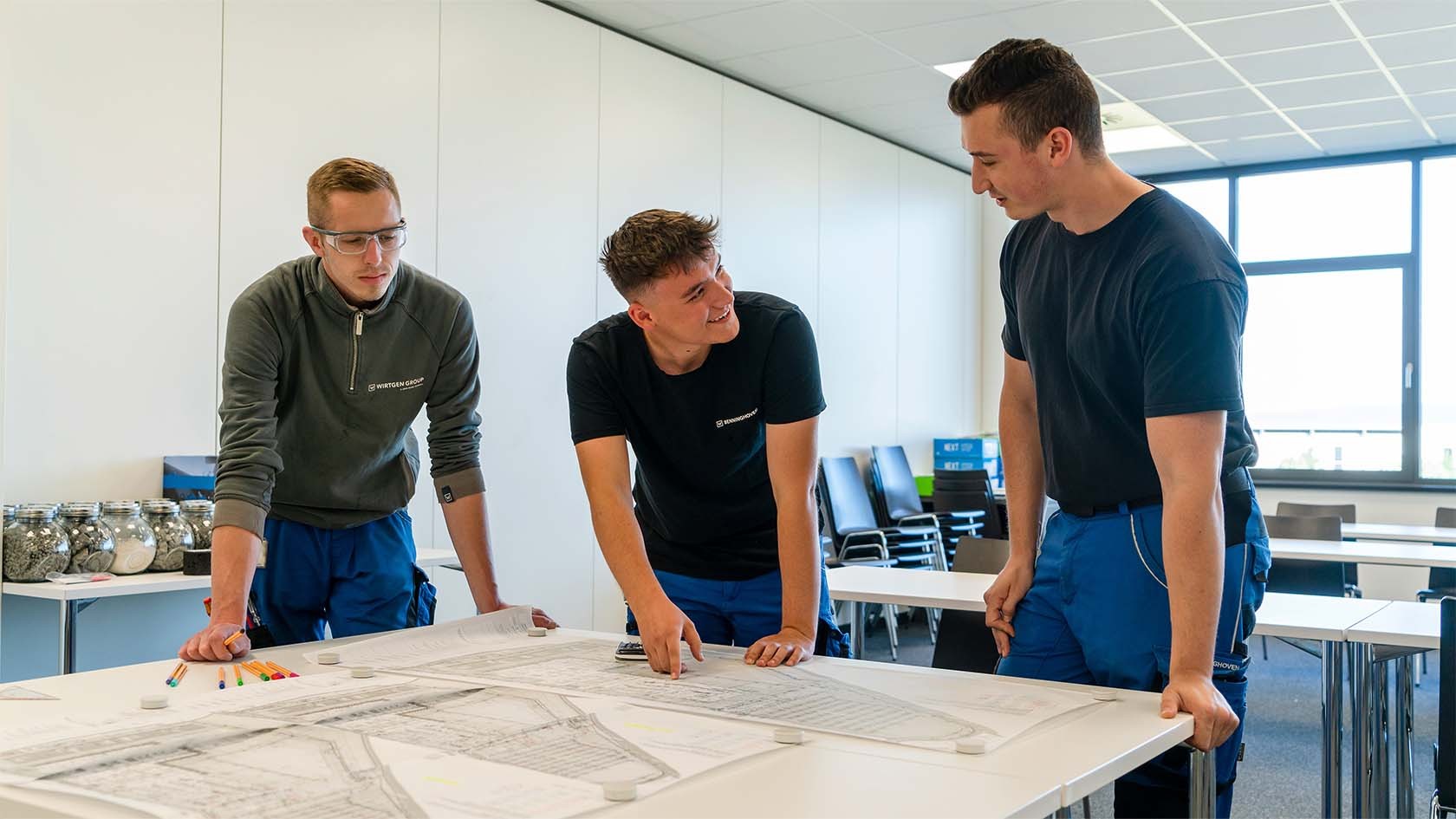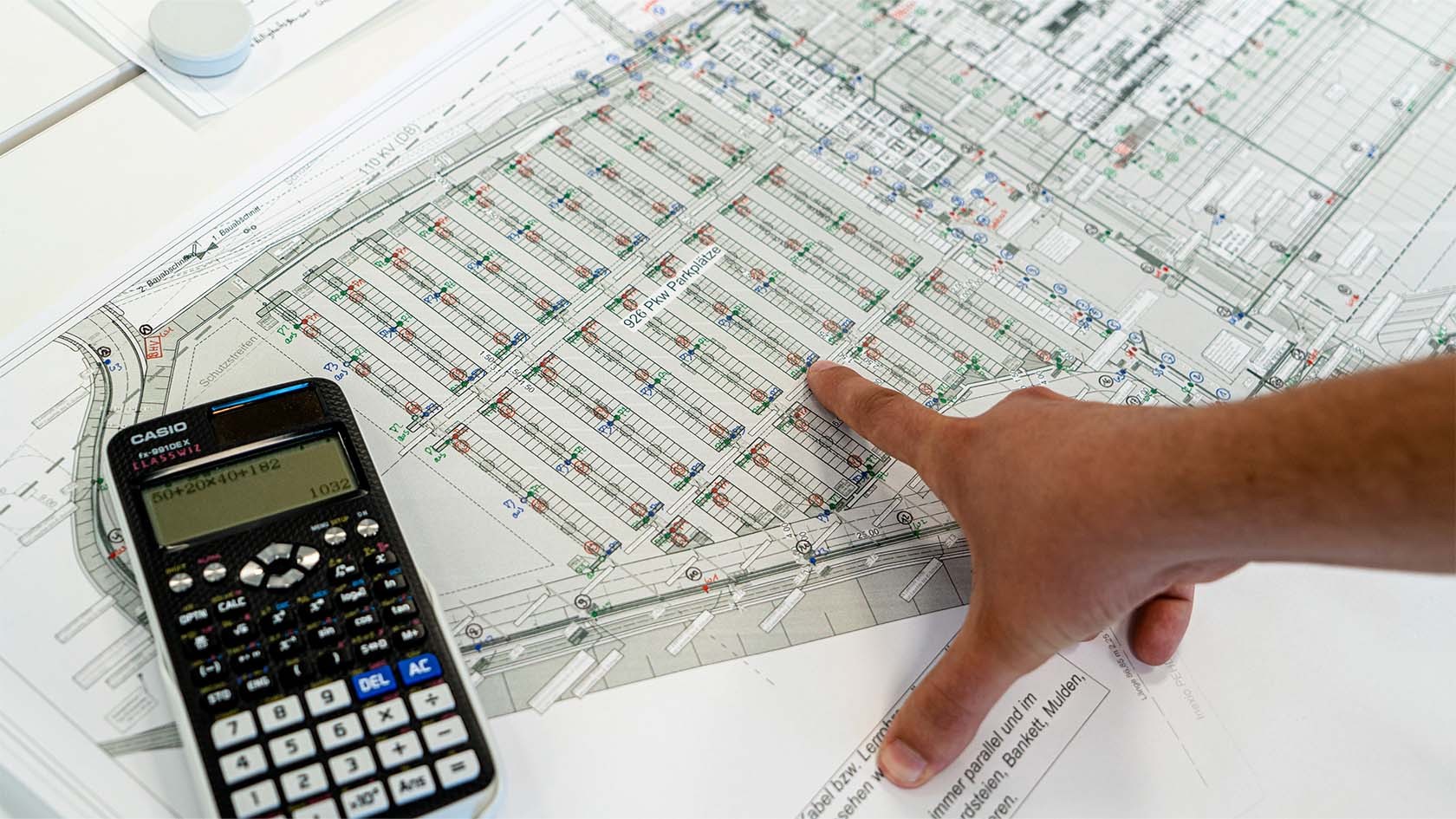- Full utilisation
- during darkness
- Consumption
- 21,286.224 kWh/year
- Electricity costs
- € 6,385.87 per year
- CO₂ emissions*
- 7.791 t/year


Optimisation of the lighting system results in a 64 % efficiency increase
Climate and environmental protection are important issues for the young generation – including at Benninghoven. How can companies save even more energy and CO₂ and improve handling of their resources? Three Benninghoven apprentices pursued these questions as part of the Energy Scouts 2021 project by the IHK (Chamber of Commerce and Industry) by developing and implementing a sustainable concept for optimising the car park lighting. The intelligent control of the switching groups, adapted to the shift and weekend periods, saves energy, reduces costs and strengthens the sustainability principles of the Wirtgen Group.
Saves CO₂: stadium effect vs demand-based lighting
There were many ideas, from hot water generation to compressed air supply. Together with the Benninghoven Facility Management, Andreas Freis, Jannik Theis and Zachery Lake – all third year apprentices for industrial electronics – were looking for a project that had a high energy saving potential and would be easy to implement as part of their apprenticeship training. They finally decided on “optimising the car park lighting”, which had already been a point of contention among the employees. The objective was to replace the “stadium illumination effect” with targeted lighting controlled through switching circuits, ensuring best possible capacity utilisation while being energy efficient.
Good arguments for optimised car park lighting:
Highly motivated after participating in a workshop for basic knowledge on energy scouts and climate protection delivered by an energy advisor, Andreas Freis, Jannik Theis and Zachery Lake launched their project in winter 2021.
What is the situation? In the first step, the team took stock of all existing light units in the car park area and the current switching groups. As there was no sound diagram for the switching groups, the apprentices had to check the allocation of the light units to the switching circuits and then generate a diagram.

What about the brightness? The brightness of the individual light units was determined with a lux meter and then compared to the legal requirements regarding the factory roads, footpaths and parking area. It quickly became clear that energy savings were possible without having to compromise on safety.
Based on this information, the apprentices carried out an amortisation calculation in Excel. Thanks to the data sheets, the wattage for each individual light unit was determined and the energy consumption was calculated before the start of the project. The result was optimised by changing the switching times and switching groups based on demand and the different working hours of the employees: perfect illumination while taking into account all regulations and safety aspects!
Lighting becomes “smart”: Then the server was programmed for “intelligent” control of the car park lighting. This was done by facility manager Daniel Kaufmann, as the apprentices do not have access to the control system for the building facilities.
Now things got serious: The first test runs were carried out in the rear section of the car park. To optimise the switching groups, a total of 69 light units had to be rewired in just 2 days – in very cold weather. Luckily, the three apprentices were supported by their colleagues from the Apprentices, Maintenance and Facility Management departments.
Everything in line with the regulations? The measuring instrument was used to once again check the brightness of the light units and carefully compared to the company and legal requirements.
The final documentation and re-calculation of the energy consumption showed that the project was a complete success! With an energy increase of 64 %, the investment will already pay off after only around 9 months. The CO₂ emissions and electricity costs are lowered by almost two thirds. The option of implementing this solution for the remaining lighting is already being considered.
Congratulations to Andreas Freis, Jannik Theis and Zachery Lake for this great example of sustainability in action. The commitment of the next generation will shape the path to climate neutrality in the coming years. These three will definitely be at the forefront!
All three apprentices completed their training in summer 2022 with top grades and were hired by the company.
*with an electricity mixture of renewable and fossil energy (reduction possible in the event of a change to only renewable energy)

